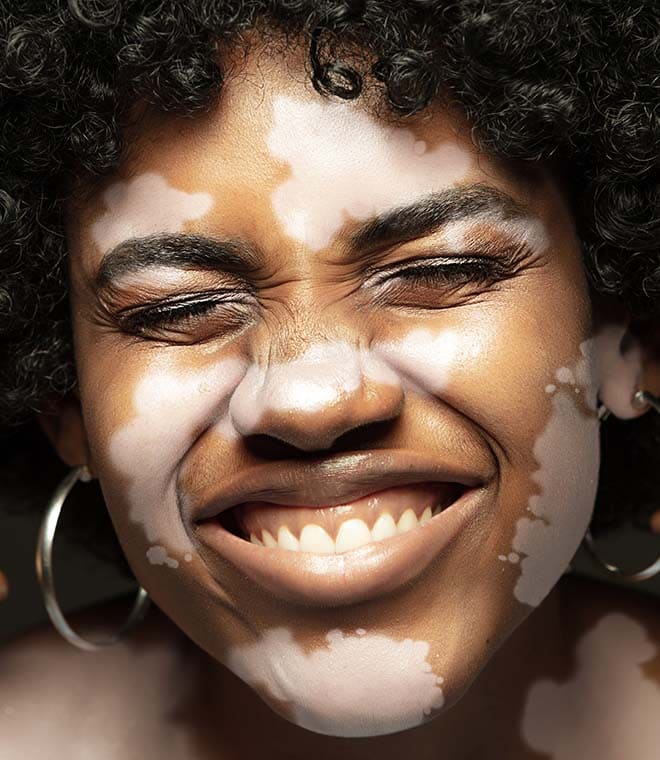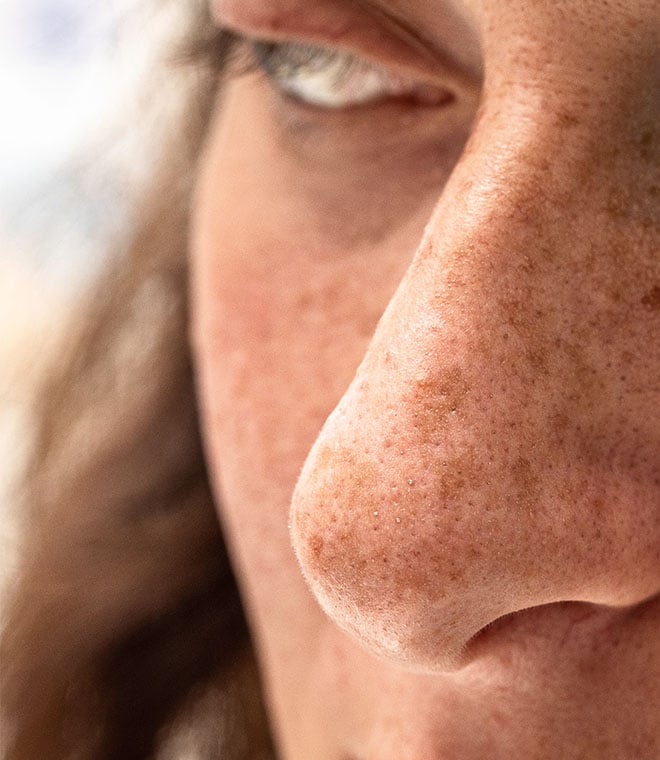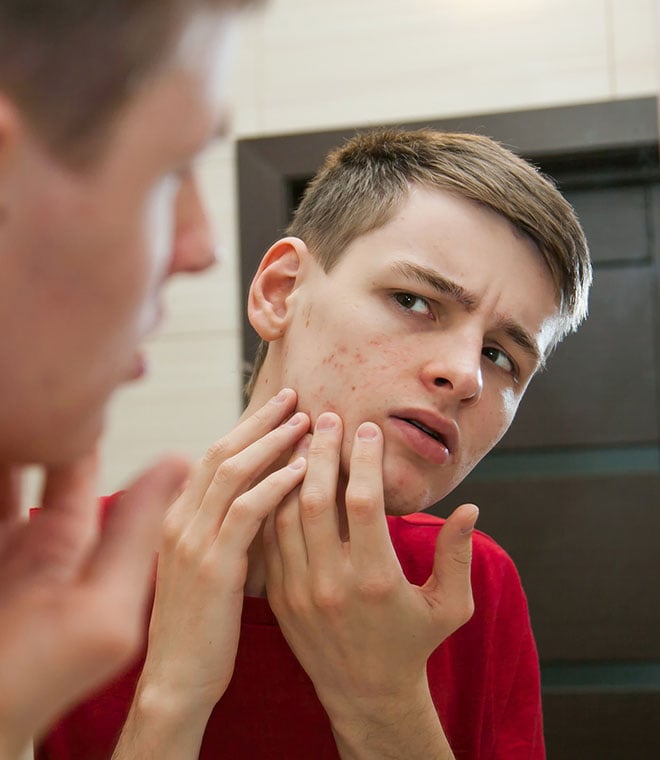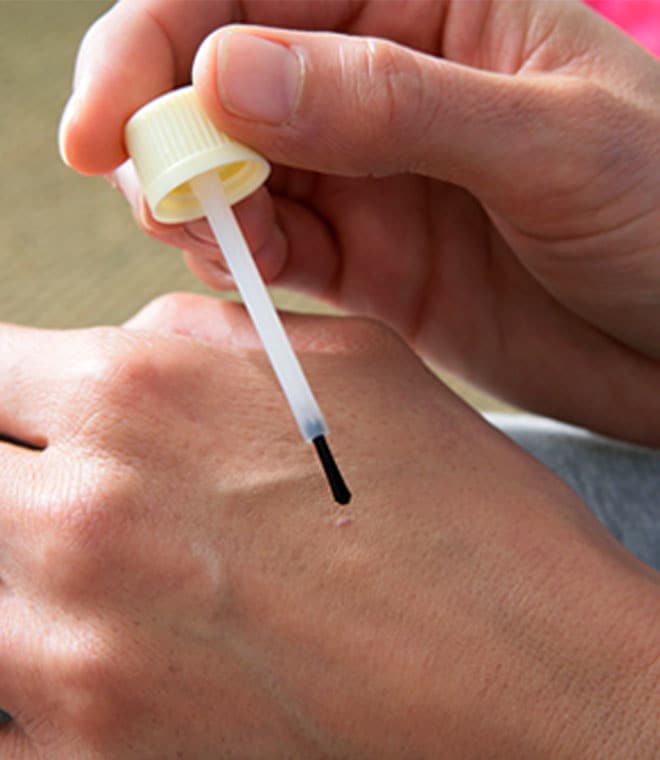Health
What causes blackheads?
By Dr. Anna H. Chacon, MD, Fellow of the American Academy of Dermatology Apr 03, 2024 • 8 min
Anyone can get blackheads, including teenagers, young adults and older adults. Blackheads are skin lesions that may occur in large numbers as a component of acne or as an occasional, single blemish.
What are blackheads?
A blackhead is a type of acne also known as an open comedone. Blackheads can occur anywhere on the body where you have pores, which are the small openings in your skin that house hair follicles. Most often, blackheads occur where the pores are larger or more numerous in quantity, like on your face, chest and back.
What causes blackheads?
A blackhead forms when a hair follicle is dilated and becomes clogged with oil and dead skin cells.
Each of the many hair follicles on your skin contains a sebaceous gland that produces an oil called sebum. It’s the sebum that helps keep your skin soft. However, sometimes the sebaceous glands produce too much sebum. The excess oil and skin cells collect in the opening of the follicle, causing a bump known as a “comedo.”
When the skin over a comedo stays open, the clog turns black, and that’s why it’s called a blackhead. There’s a common misconception that the dark color of a blackhead is caused by dirt, but that isn’t the case. Rather, when the built-up sebum and dead skin cells trapped in the follicle are exposed to air, they become oxidized and turn black.
By contrast, when the skin closes around a comedo, it may appear white in color, and it’s called a whitehead, or “closed comedone.”
Several factors may lead to the development of blackheads, including any combination of:
- Overproduction of sebum
- Irritation of the skin or the surrounding follicles
- An excess or abundance of dead skin cells, which may contribute to clogged pores
- Hormonal changes from factors such as puberty
- Some medications, including corticosteroids, which are known to contribute to acne
- Injury to the skin due to squeezing pimples, as this may lead to further breakouts
- Stress, which can trigger acne to flare up
What do blackheads look like?
Most blackheads appear as a small bump on the skin with a black tip. The black tip may be very small and flat, like a pinpoint, or it could be a larger, more conspicuous, dome-shaped head that appears more brown than black. Sometimes, a blackhead simply looks like an enlarged pore.
Where do blackheads most commonly occur?
Blackheads occur most often on the face, chest and back.
- Face. The concentration of hair follicles and sebaceous glands is much higher on the face than anywhere else on the body. Blackheads commonly develop on the nose and cheeks. They may occur in larger numbers on the forehead, which is exposed to oils along the hairline, and on the chin, which has thicker skin than the rest of the face.
- Chest. Blackheads and acne commonly develop on the chest, which has numerous hair follicles and sebaceous glands prone to overproducing sebum.
- Back. “Backne” is real, and it often includes blackheads. It’s tough to get rid of blackheads on the back because they’re hard to see—and hard to reach.
How are blackheads treated?
There are a number of treatment options for blackheads. It’s important to never squeeze or pick at a blackhead. Unfortunately, that’s the most popular way to do it, and many people find it hugely satisfying. But “popping” your blackheads damages the skin and allows bacteria to enter the pore, causing inflammation or infection. Plus, a drained blackhead will just fill right back up and turn black again. So resist the urge to squeeze, and try these treatments instead:
- Over-the-counter treatments. Acne treatments containing salicylic acid (a type of beta hydroxy acid) and alpha hydroxy acids, including glycolic acid, may help treat and prevent blackheads. These ingredients gently exfoliate the skin, and you can find them in topical acne medications, cleansers and other skin care products.
- Topical retinoids. Commonly known simply as retinol, topical retinoids are medications that are derived from vitamin A and help unclog blocked pores by gradually exfoliating the skin. Retinoids include tretinoin and tazarotene, which are available by prescription, and adapalene, which is available in prescription and over-the-counter strengths.
Retinoids often cause your skin to peel, which is normal and helps reduce the appearance of blackheads, or makes them disappear altogether. However, this occurs very gradually and with consistent use. Topical retinoids also help prevent blackheads from re-emerging. - Comedone extraction. Comedone extraction is performed by a skin care professional and involves using a metal tool with a loop on one end that pushes down on the skin surrounding the blackhead to extract its sebaceous contents.
- Chemical peels. Chemical peels involve using glycolic acid or salicylic acid to quickly exfoliate and promote the regeneration of smoother, healthier skin. Chemical peels are typically performed by a dermatologist or a licensed aesthetician.
- Laser or light treatment. Laser or light procedures can help clear blackheads, especially when combined with other types of treatment. Laser treatments vary in depth, intensity and cost.
How to prevent blackheads
While there is no sure way to prevent blackheads, there are a number of ways to minimize them:
- Choose skin care, hair care and personal care products that are oil-free and noncomedogenic, which means they don’t contribute to comedones (whiteheads and blackheads).
- Wash your face gently twice each day with a mild, oil-free and noncomedogenic acne cleanser, and rinse with lukewarm water. Be careful not to scrub your skin or exfoliate roughly. Follow with an oil-free moisturizer.
- Don’t touch your face throughout the day, as this may spread oils throughout the face, further clogging pores.
- Don’t pick, squeeze or pop blemishes. Instead, let them heal naturally. Leaving pimples alone is essential in order to allow the skin to heal without scarring or new skin lesions.
Blackheads are no fun, but they’re very common, and in most cases, highly treatable. You can prevent and treat blackheads at home with over-the-counter treatments, a daily skin care routine and an overall healthy lifestyle.
If your blackheads persist, or they’re causing you physical pain or mental anguish, see your dermatologist. Together, you’ll create a treatment plan based on your skin type and the suspected cause of the blackheads. With time and perseverance, there’s a good chance you’ll beat the blackheads once and for all.
Clinically reviewed and updated April 2024.
Sources:
- https://www.aad.org/public/diseases/acne/diy/types-breakouts
- https://www.aad.org/public/diseases/acne/skin-care/tips
- https://www.aafp.org/afp/2017/0601/p740.html
- https://www.sciencedirect.com/science/article/pii/S1578219016303626
- https://www.mdpi.com/1420-3049/21/8/1063/htm
- https://www.researchgate.net/publication/324826337_Chemical_peels_for_acne_vulgaris_A_systematic_review_of_randomised_controlled_trials
- https://www.ncbi.nlm.nih.gov/pmc/articles/PMC5931279/
- https://www.aad.org/public/diseases/acne/skin-care/habits-stop
- https://www.mayoclinic.org/diseases-conditions/acne/symptoms-causes/syc-20368047
- https://www.uptodate.com/contents/acne-vulgaris-overview-of-management?search=acne&source=search_result&selectedTitle=1~150&usage_type=default&display_rank=1
- https://www.aad.org/public/diseases/acne/derm-treat/treat
- https://my.clevelandclinic.org/health/diseases/22038-blackheads



